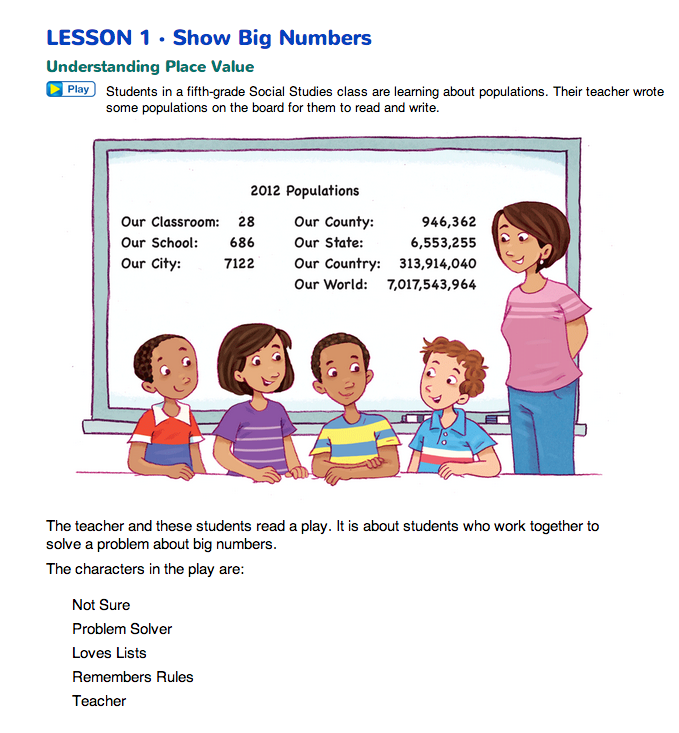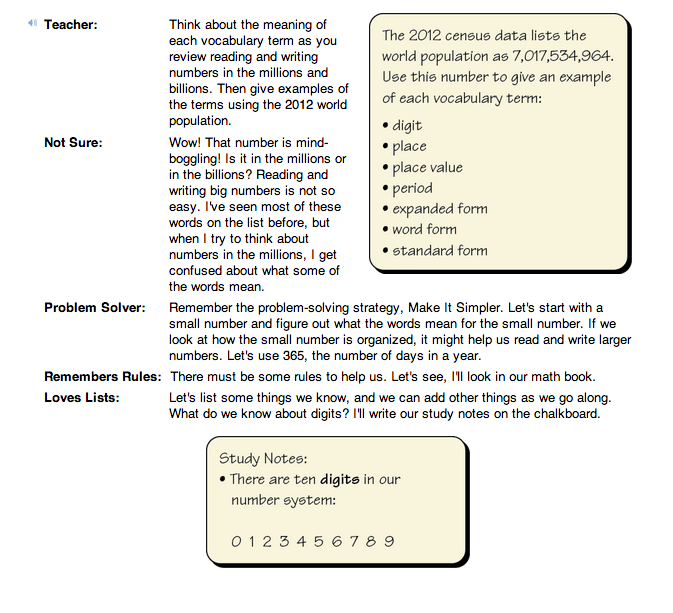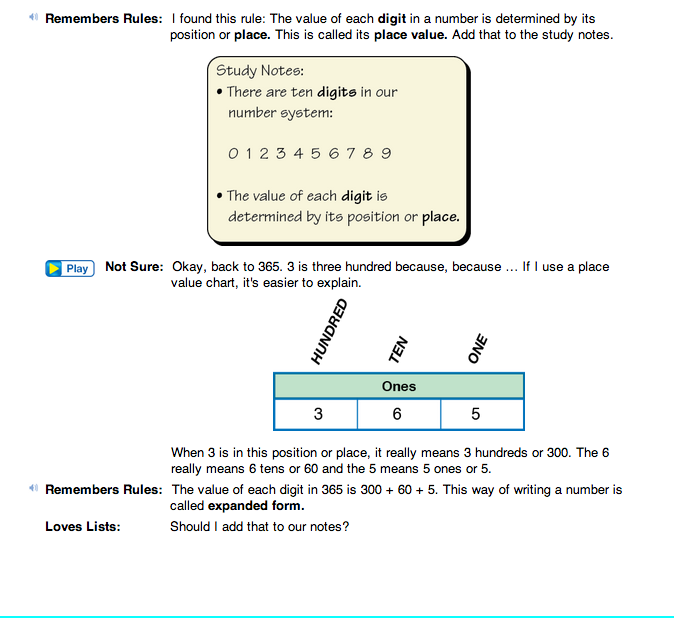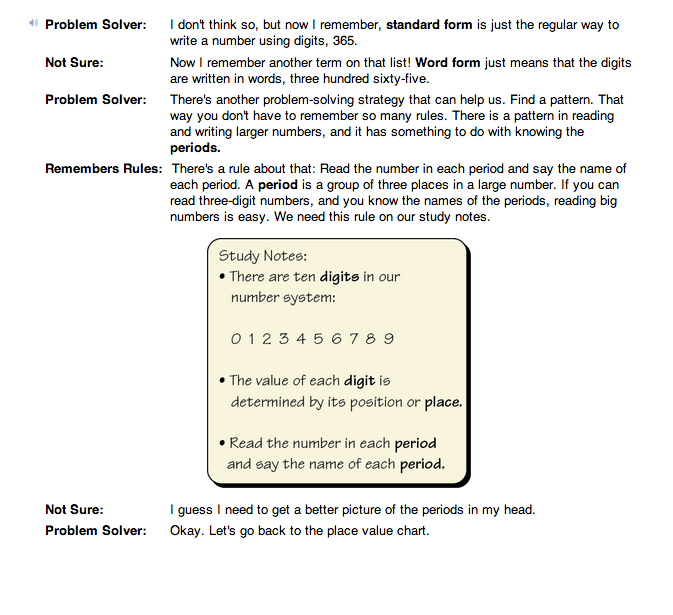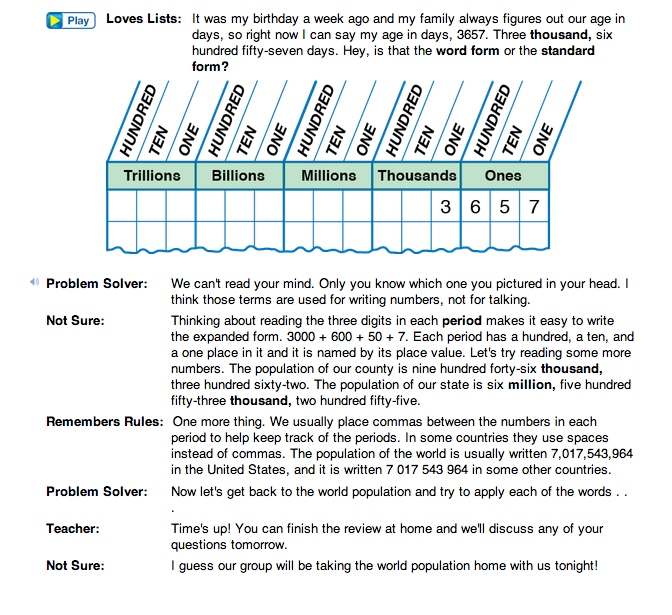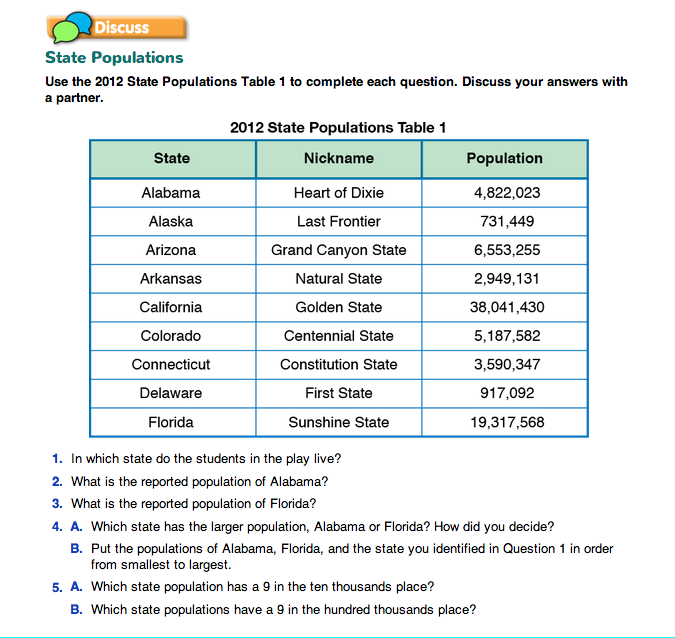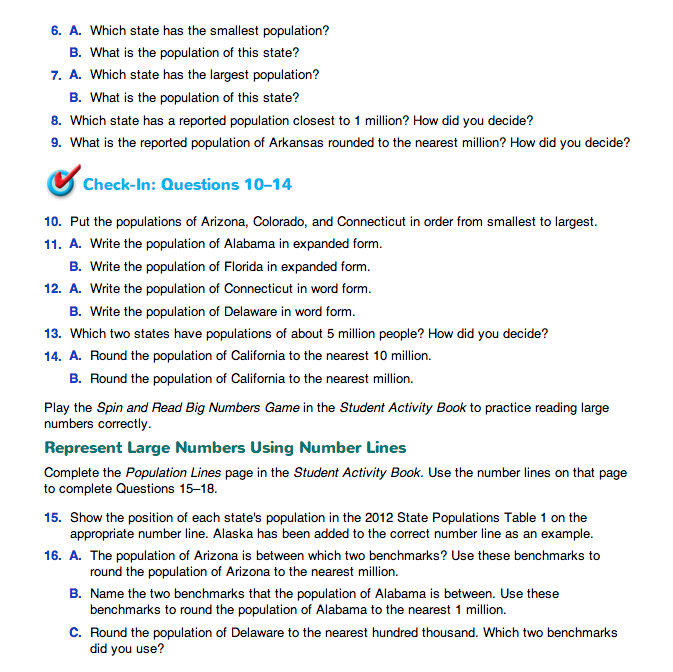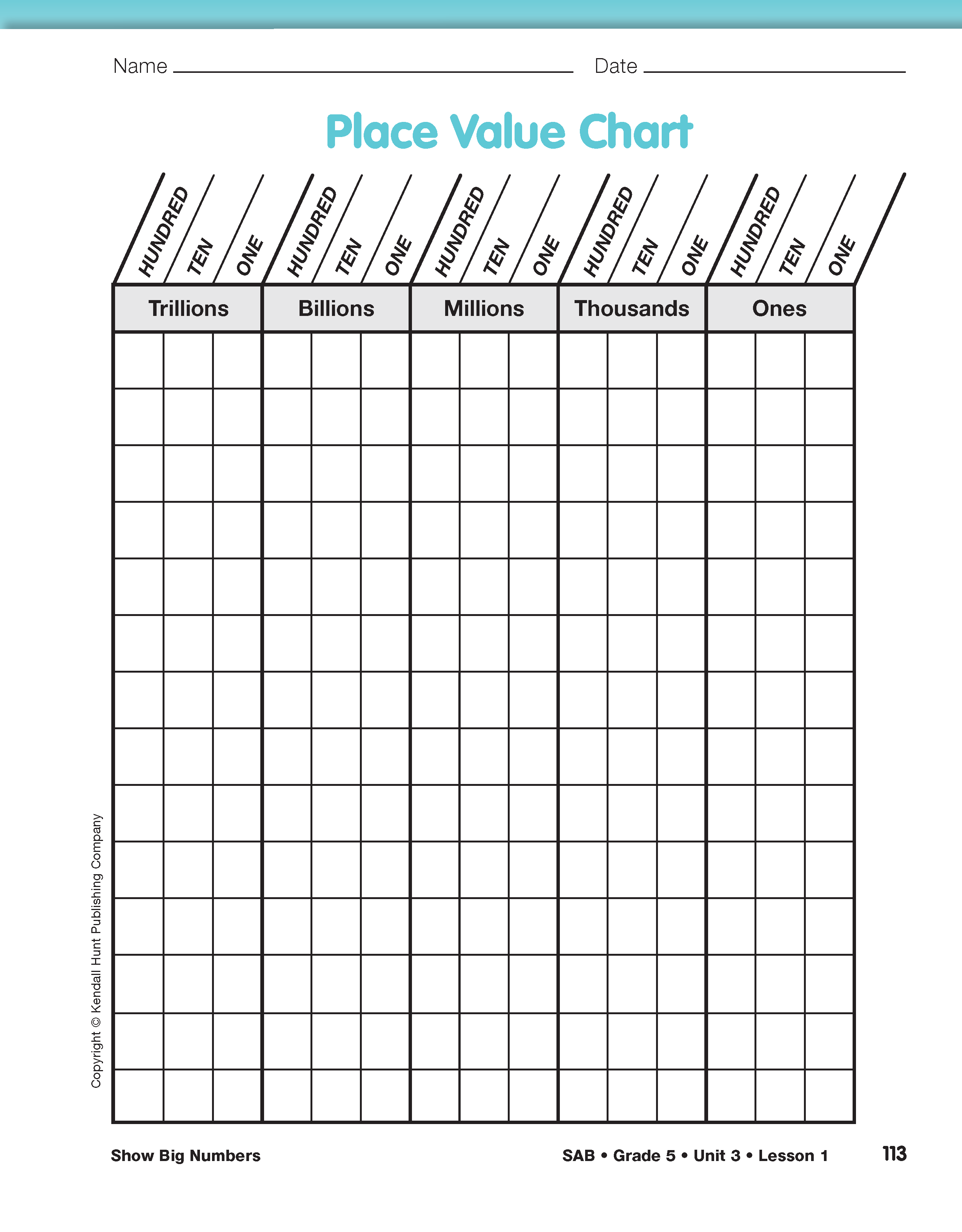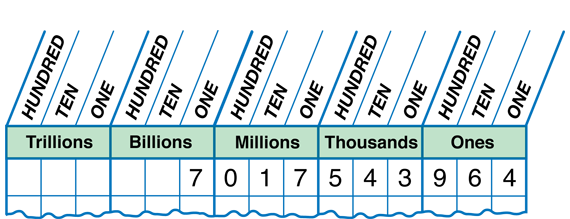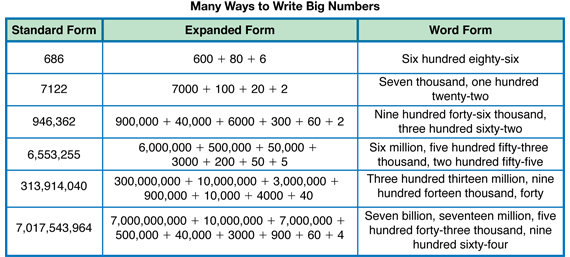Show Big Numbers
Est. Class Sessions: 2–3Developing the Lesson
Part 1. Review Place Value
Understanding Place Value. Begin this lesson by asking students to read the play “Understanding Place Value” on the Show Big Numbers pages in the Student Guide. This play provides a context that provides an opportunity for students to refresh their ideas about place value and to review the language used in reading and writing numbers to the billions.
This play can be read in small groups with each student in the group reading one character's part or it can be performed as a Readers' Theater with the whole class.
After students have read the play, refer to the list of vocabulary words that the teacher introduced in this play. Display the Place Value Chart page from the Student Activity Book. Have students write the number 7,017,543,964 on their place value chart as you write it on the display. See Figure 2.
Use these or similar discussion prompts to check student understanding of place value. Encourage students to use the vocabulary terms in their answers.
Continue this activity by writing other numbers shown on the display at the beginning of the play. For each number, ask one or more students to read the number and then use similar discussion prompts to help students understand the value of each digit in the number. These types of prompts assist students in writing the number in expanded form.
After students have discussed several numbers from the play using the Place Value Chart, display the Many Ways to Write Big Numbers Master from the Teacher Guide. Invite students to come to the display and represent numbers from their chart using either standard, expanded form, or word form. As students write a number using one of the representations, ask them to explain their work.
For example:
See Figure 3 for a sample of a completed Many Ways to Write Big Numbers display.
Continue until several of the numbers have been represented and discussed. Direct students to the Write Big Numbers page in the Student Activity Book. Students complete the table representing numbers in standard form, expanded form or word form. Once students complete this page have them share their work with a partner. Encourage students to practice reading each number as they share their work.
Read, Write, and Compare Big Numbers. Direct students to the State Populations section in the Student Guide. Have students work with a partner to solve and discuss Questions 1–9. As students work, ask them to share their answers and their thinking. For example, in Question 4A, students are asked to compare the reported population of Alabama with the reported population of Florida and to explain their thinking. Students should be able to identify Florida as having the larger population because its first digit is in the ten millions place, while the first digit in the population for Alabama is in the millions place. In Question 4B, students order the reported populations of Alabama, Arizona, and Florida from smallest to largest. Since the population of Alabama is four million, eight hundred twenty-two thousand, twenty-three, it has the smallest population of the three. The population of Arizona is more than 6 million so it is the second smallest. Florida has a population of almost 20 million so it is the largest.
Questions 8–9 ask students to estimate quantities. For Question 8, students should identify Delaware as the state with a reported population closest to 1 million since 917,092 is less than 100,000 away from 1 million so 1 million is a convenient number or reasonable benchmark number. For Question 9, the population of Arkansas should be rounded to 3 million since 2,949,131 is much closer to 3 million than it is to 2 million.
Assign Check-In: Questions 10–14. Students can complete these questions independently in order to check their understanding of place value.














